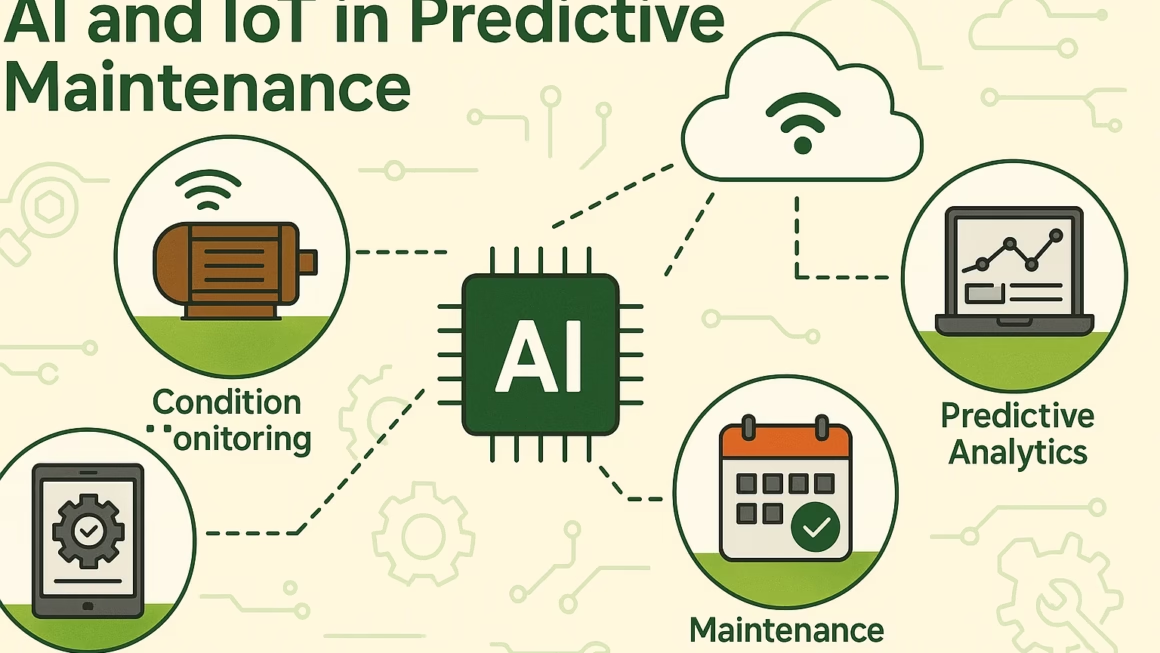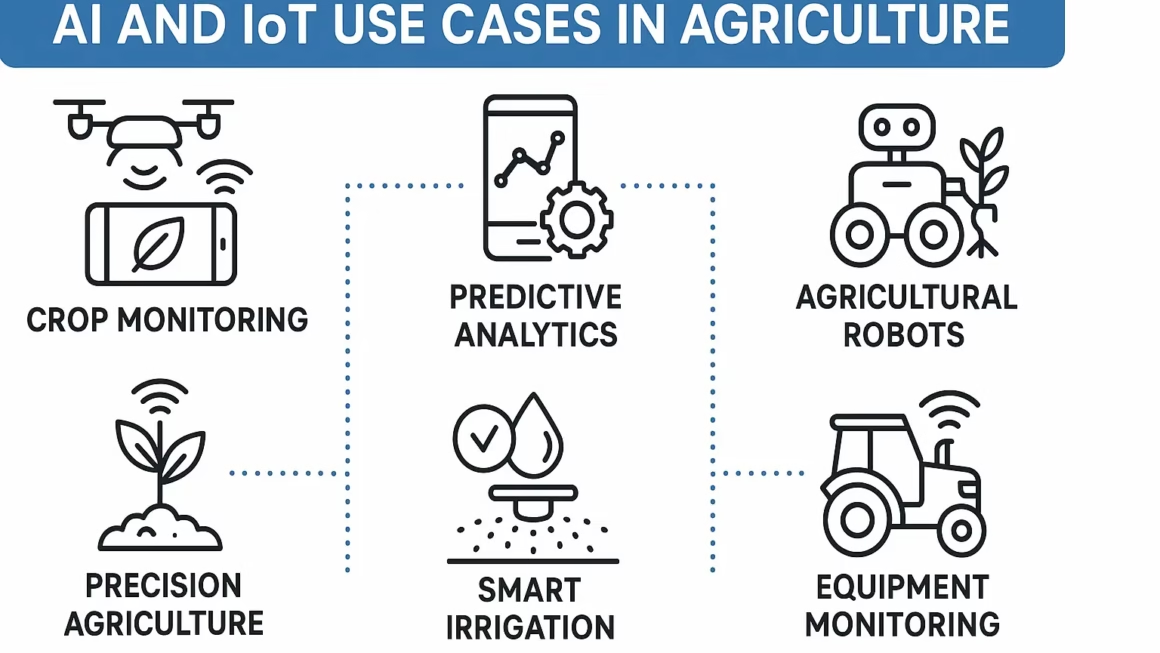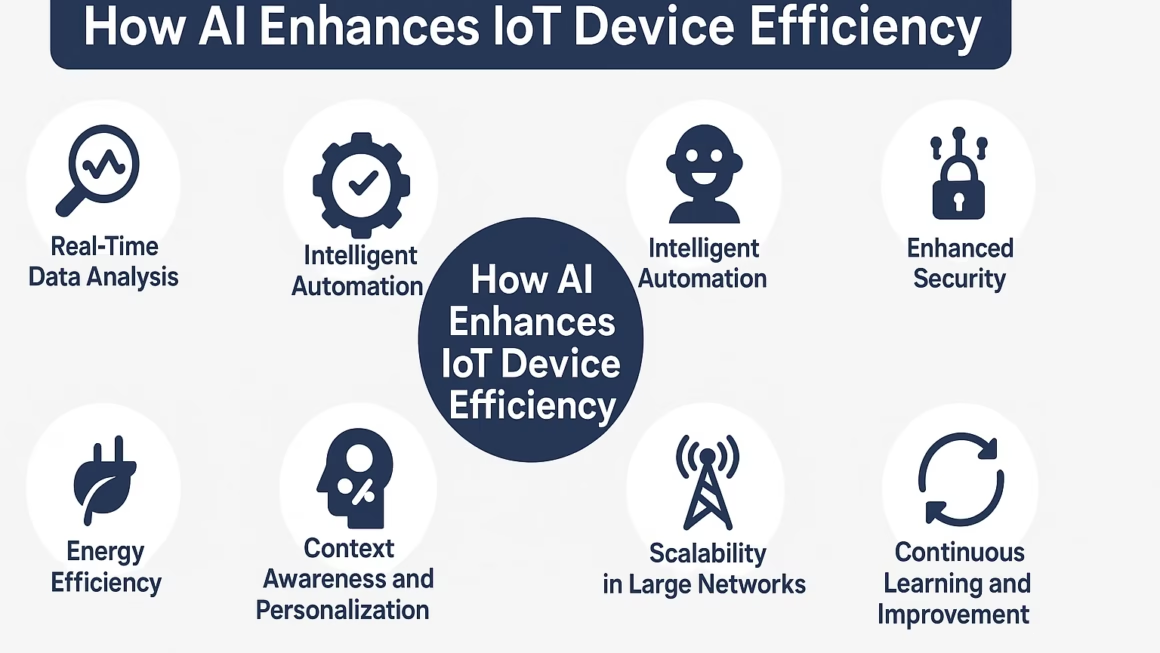IoT in Smart Cities 5 Ways It’s Shaping Urban Life
Growing urbanization of the 21st century has posed tremendous challenges to the city planners and administrators. High rates of population density, degradation of the environment, acute road traffic and management of resources are some of the crucial issues that affect most of the cities in the world. However, the idea of the Smart Cities appeared as an answer to these issues – smart cities, which use digital technology to make the life better for citizens and optimize infrastructure while making it sustainable regarding the development. This transformation has its core in the Internet of Things (IoT), which connects to the internet objects and systems from everyday life, so that data can be collected, analyzed and automatic responses can be created.
IoT for smart cities is a shift in paradigm in urban management and citizen engagement. Cities can be made more responsive, efficient and environmentally friendly through an interconnected network of sensors, device and system. This essay examines the role IoT plays in empowering the smart cities, discusses what it does, identifies its strengths and weaknesses and how it ends up in shaping the future.
What is IoT?
The Internet of Things (IoT) is the term that is used to describe the network of physical objects that contain sensors, software, or others technologies that are able to connect and exchange information with other devices through the internet. These “things” may include appliances in a home to industrial machines, streetlights, vehicles, and components of infrastructure.

Within smart cities, the IoT facilitates real-time monitoring, collection, and management of different city services like transportation, energy, water supply, waste management, and public safety. This integrated system assists cities to be more productive and develop quality of life for the citizens.
Building blocks of IoT in Smart Cities
Computer systems and IoT ecosystem in smart cities necessitate the existence of various key components to function properly:
1. Sensors and Devices
These are the front line tool that extract data from physical environment. Some of them are the temperature sensors, pollution detectors, motion detectors, and smart meters.
2. Connectivity
Devices communicate with the help of wireless technologies like Wi-Fi, Bluetooth, 5G, LPWAN (Low Power Wide Area Network), and NB-IoT (Narrowband IoT). Connectivity is necessary for the real time data to be transmitted.
3. Data Processing and Cloud Computing
The collected data is stored and analyzed in the cloud or edge computing infrastructure. Processing allows one to spot patterns and induces certain actions.
4. User Interface
Dashboards and mobile applications enable the city administrators and citizens to monitor systems and engage services. For instance, a mobile app can display the available parking slots in real time.
5. Security Infrastructure
Security is very important for securing data as well as enhancing levels of trust. This refers to encryption, authentication mechanisms, update of software and firmware.
A perfumed overview of important applications of IoT in Smart cities

1. Smart Transportation
IoT revolutionizes urban mobility with traffic management systems among other elements, real-time tracking of public transport and intelligent traffic signals. Embedded sensors in roads and vehicles contribute to reducing traffic congestion and optimize the traffic flow. Apps alert users for delays and provide alternative routes.
2. Smart Parking
Smart parking systems are based on the use of sensors that determine vacant parking spaces and provide the users with updates in real-time. This helps save the time spent in looking for parking and reduces the idling emission of vehicles.
3. Waste Management
Smart bins fitted with sensors for fill level tells the waste collection services when to empty them. This makes it more effective and does not waste time and fuel as well as manpower with spurious trips.
4. Energy Management
The smart grids and energy meters allow monitoring of the consumption of energy in real-time, forecasting of demand and dynamic pricing. Cities are in better position to regulate electricity distribution and energy saving.
5. Water Management
IoT sensors in water meters and monitors evaluate water consumption, detect leakages, and control irrigation systems. This is effective use of water resources especially in arid areas.
6. Environmental Monitoring
The IoT sensors can monitor air quality, noise, humidity, and temperature. Data collected from these sensors assists authorities to engage in the management of pollution as well as take measures in the occurrence of adverse conditions.
7. Public Safety and Emergency Response
Intelligent CCTV system with the use of facial recognition and motion detection can help monitor the city’s public space. Undertaking location-based identification and AI-driven alerts can help to send emergency services quicker.
8. Smart Lighting
Street lights with motion detection can be dimmed depending on how pedestrian and vehicular traffic. This is energy-saving and it also advances public safety.
9. Building Automation
IoT is used by smart buildings for heating, ventilation, air conditioning (HVAC), lighting and security. Automated systems are energy efficient and they enhance occupant’s comfort.
10. Citizen Engagement
Mobile apps and digital systems on the basis of IoT enable residents to report matters and give feedback, as well as access city services. This ensures transparency and active citizen involvement.
Advantages of the IoT in Smart Cities

1. Efficiency and Cost Reduction
Among other benefits of the IoT, it helps cities to automate operations and save on waste and excessive spending on resources, eventually costing cities a lot less.
2. Improved Quality of Life
From improved air quality to a quicker response to emergencies, IoT-based services improve urban life for citizens.
3. Environmental Sustainability
Improved use of energy and water, less traffic, smart waste management contributes to bringing green back to the city.
4. Data-Driven Decision Making
Up to date data enables the city officials to make smart decisions made in advance before the issue gets blown out of proportion.
5. Enhanced Public Safety
IoT surveillance, emergency alerts, and predictive analytics enhance urban communities’ safety and security.
Problems on Implementation of IoT in Smart Cities

While there are benefits of deploying the Internet of things in smart cities, some challenges are associated with it:
1. Data Privacy and Security
When we are dealing with a giant pool of data collection, there is always a looming danger of breach, surveillance, and unauthorized access. Security protocols and regulation frameworks should be strong.
2. Infrastructure Costs
The construction of the requisite infrastructure; sensors, connectivity, and data centers, takes a huge sum of money upfront.
3. Interoperability
There are many IoT devices assembled by various manufacturers using proprietary protocols. Interoperability between all systems is a major technical barrier that has to be addressed.
4. Data Management
Processing and storage of massive data in real time require high computing powers and efficient data handling techniques.
5. Digital Divide
Not all citizens might be able and even familiar with digital technologies. Closing the digital divide is important for inclusive smart cities.
6. Regulatory and Ethical Issues
City-wide surveillance and data gathering can result in dilemmas that are ethical in nature. The policymakers need to strike a balance between innovation and civil liberties and transparency.
Case Analysis of IoT in Smart Cities
1. Barcelona, Spain
Barcelona is a forerunner in the smart city development. IoT-based systems are applied for waste management, parking, lighting, and public transport. The city has laid more than 500 kilometers of its fiber-optic network in order to facilitate smart services.
2. Singapore
In Singapore, Smart Nation initiative utilizes the IoT for monitoring of traffic, city planning, and healthcare. Its Smart Lamppost project utilizes street lights for collecting data regarding a variety of applications.
3. Amsterdam, Netherlands
Amsterdam Smart city program advocates for collaboration between the citizens, businesses and the government. Projects are such as energy efficient buildings, smart grid experiments and real time traffic technology.
4. San Diego, USA
San Diego has installed smart streetlights that adjust lighting based on activity and, monitor the traffic, as well as the air quality. The outcomes of these initiatives have been energy savings, and better urban planning.
Prospects of IoT in Smart Cities in the future.

The range of IoT in smart cities will grow with the progress of technology. Emerging trends include:
1. AI integration and ML.
IoT systems will be more intelligent with the help of predictive analytics and automation. Cities can plan future traffic patterns, and improve on waste collection routes and preemptively deal with equipment failures.
Data processing near where it is generated decreases latency and enables a faster decision-making process, particularly important for real-time applications such as traffic signals or emergency response.
3. Blockchain for Data Security
Blockchain can add trust and security in sharing of data between the stakeholders through the use of a decentralized and tamper-proof ledger.
4. 5G Connectivity
5G networks will give us the high-speed and low-latency communication that is needed in support of dense IoT ecosystems in urban environments.
5. Citizen-Centric Design
The future of smart cities will be more oriented to the needs of citizens, which will make the IoT applications Focus less on inclusion, availability and the level of generalized happiness in cities.
Conclusion
Internet of Things is transforming the lifestyle in cities through building of smart cities. Interrelation of infrastructure, systems and services provided by IoT helps cities to become more efficient, faster in responding to challenges and can improve the citizen’s quality of life. Although it is a journey that is littered with challenges as far as security concerns, cost implications and governance are concerned the benefits out of reaching the promised land of this scenario are tremendous.
With the spreading urbanization, the Internet of things shall be one of the main drivers in making the urban spaces not only livable, but intelligently and sustainably livable. When planned mindfully per ethical considerations and with strong technologies, IoT-powered smart cities can be the blueprints for future urbanisation in the world.




2 thoughts on “IoT in Smart Cities: 5 Ways It’s Shaping Urban Life”